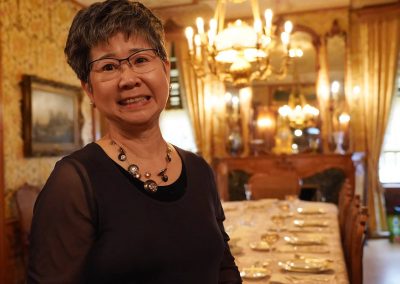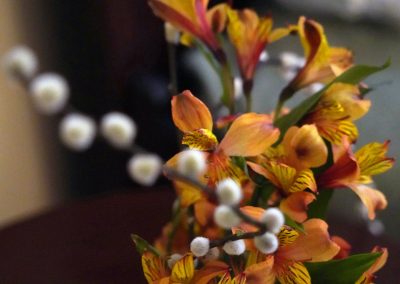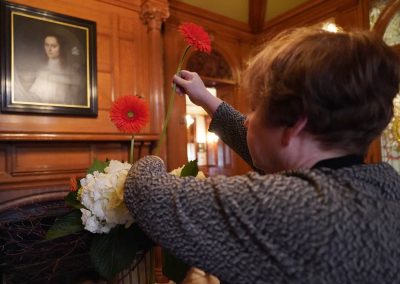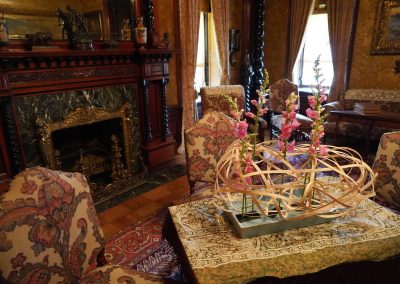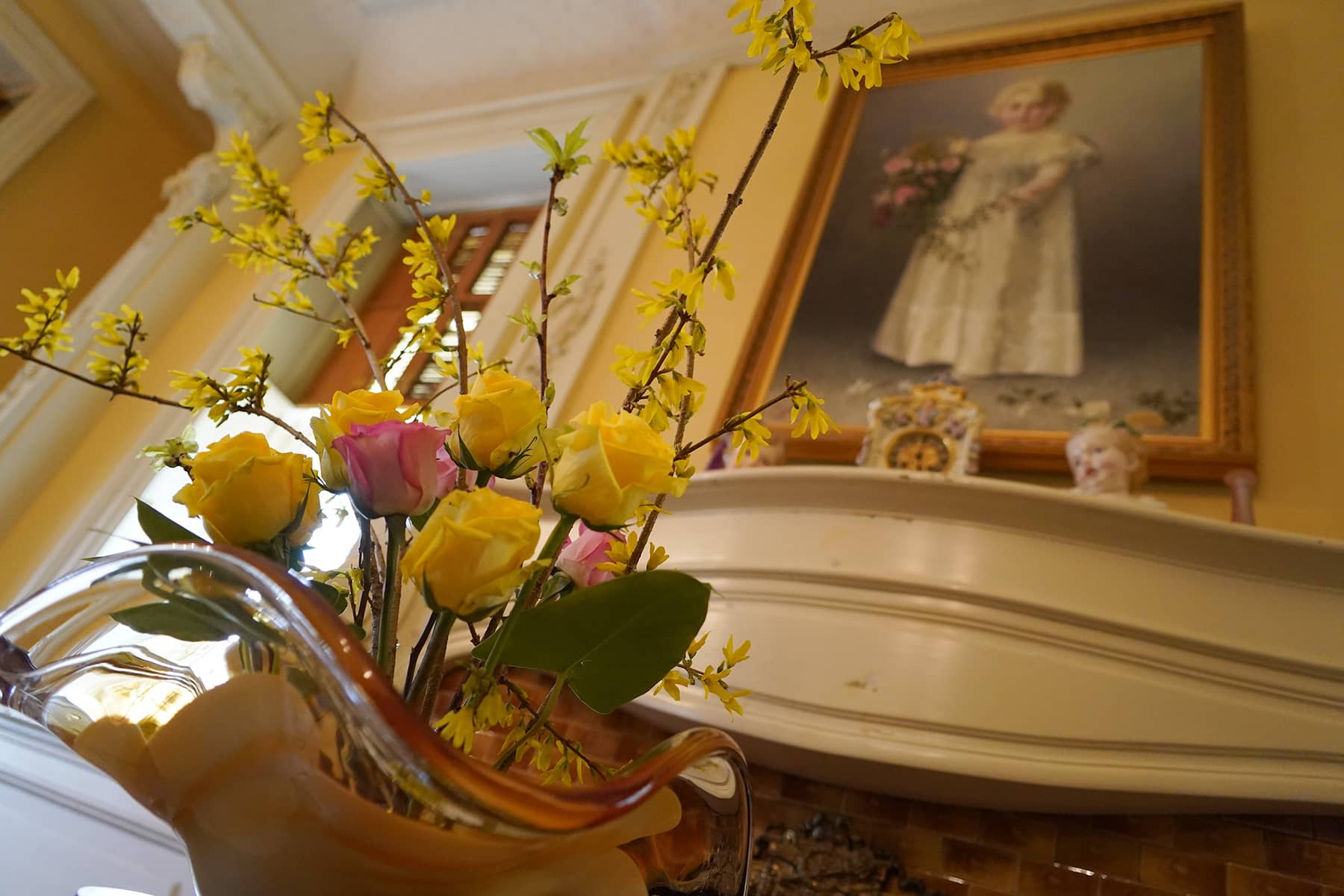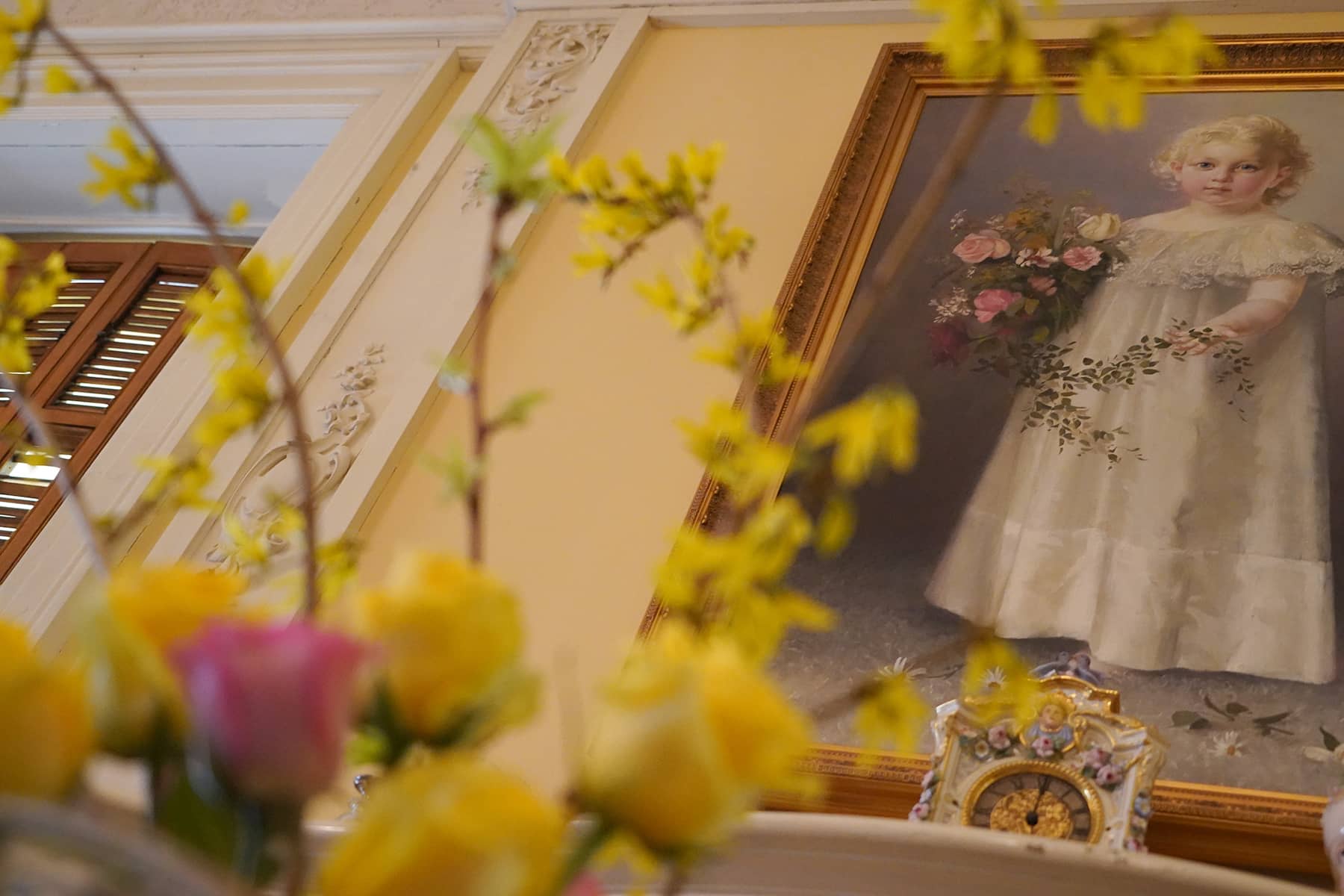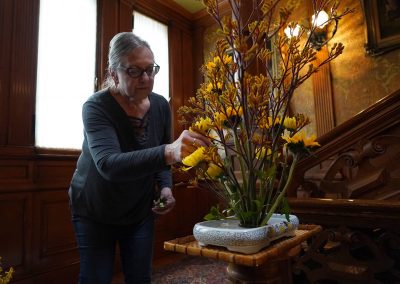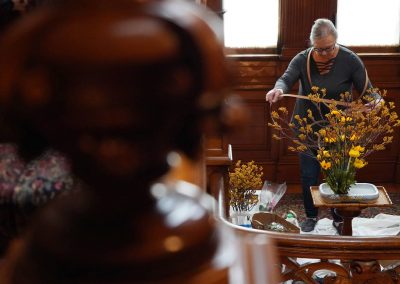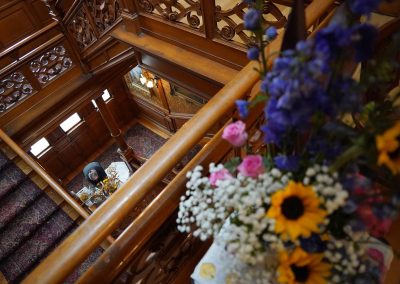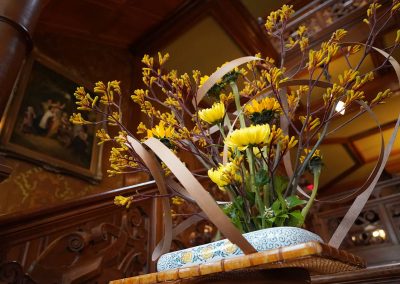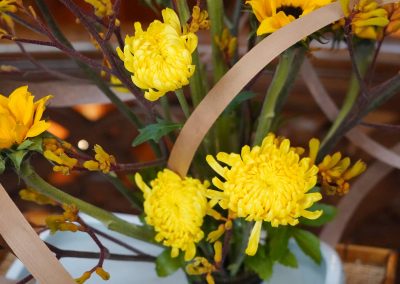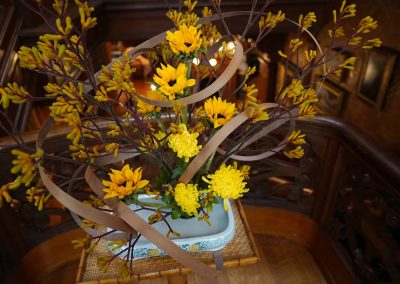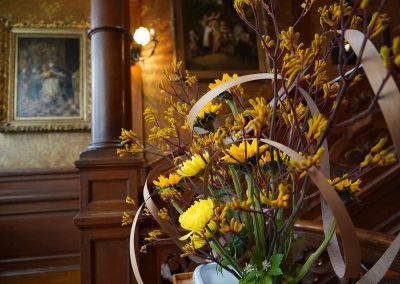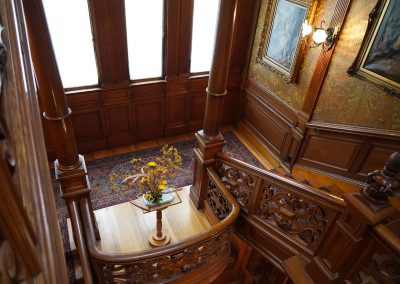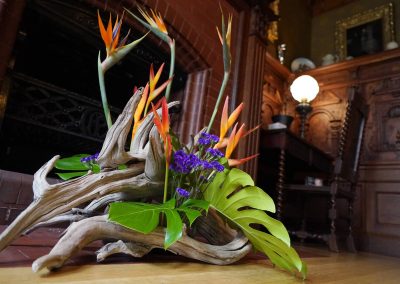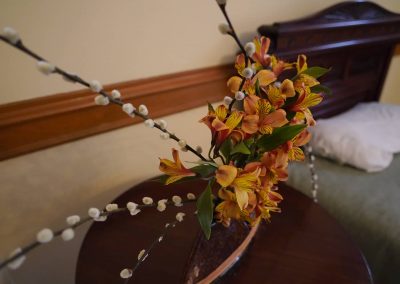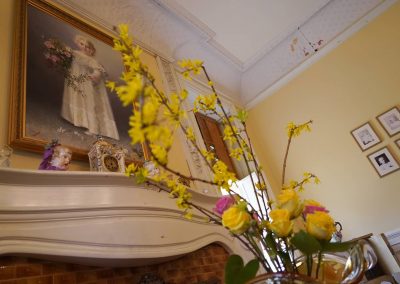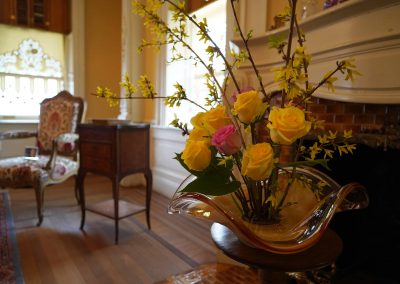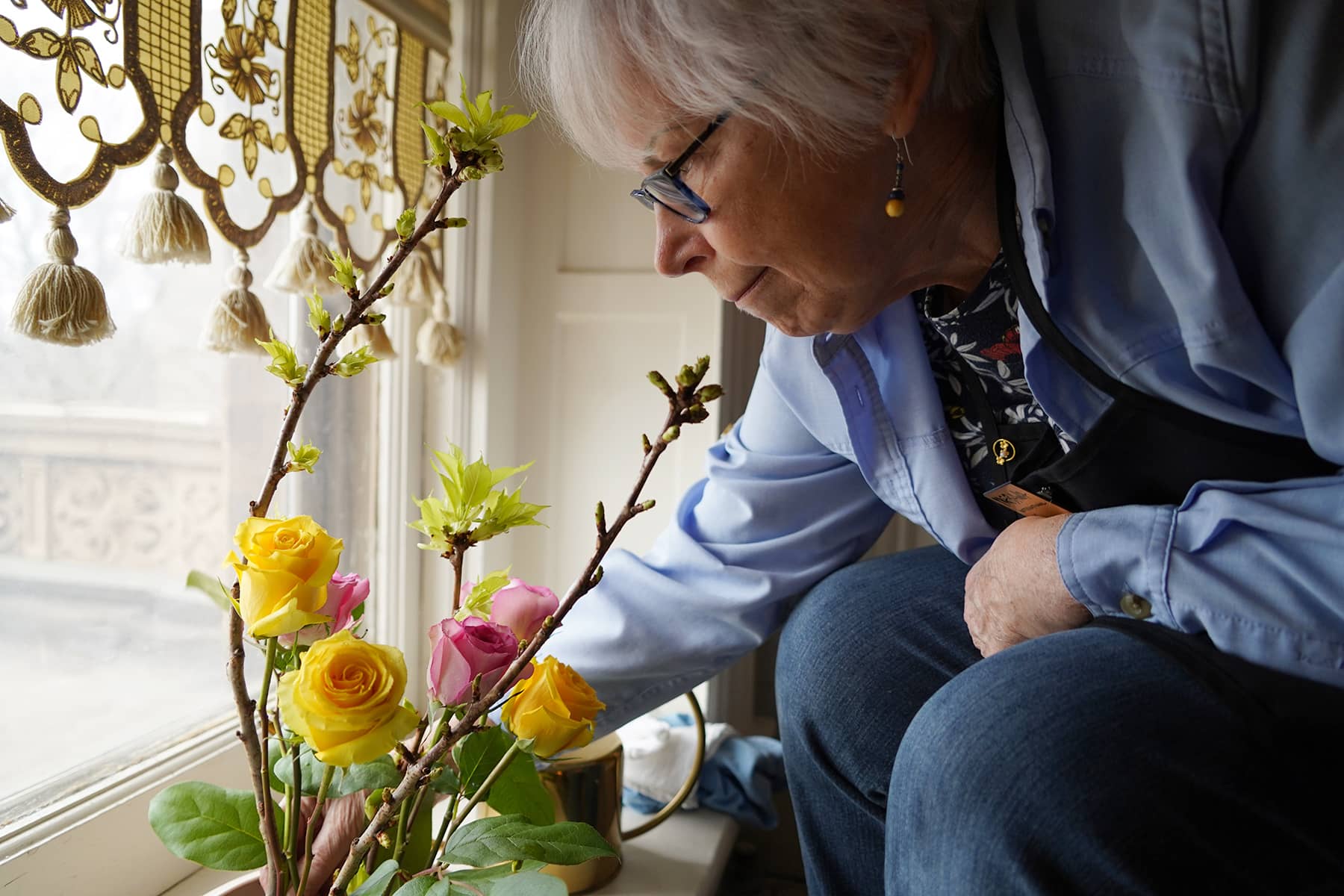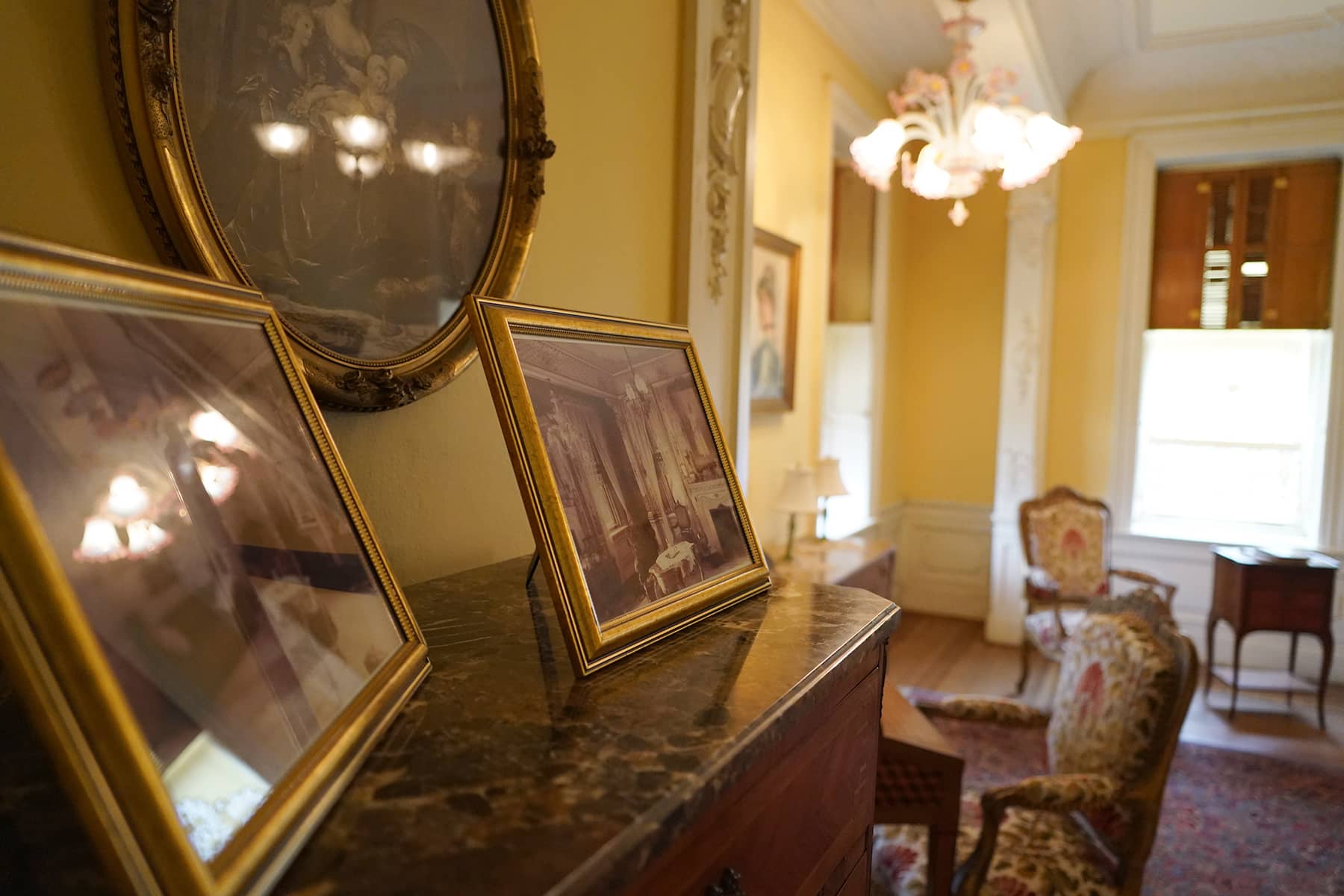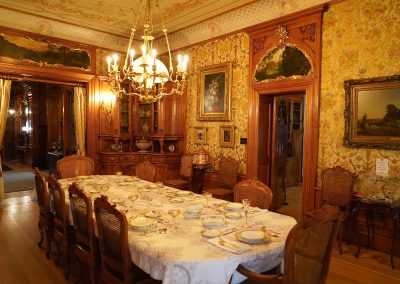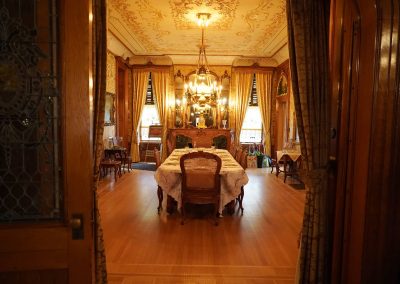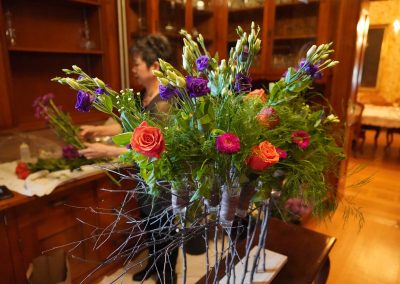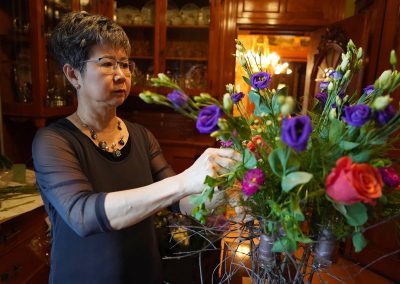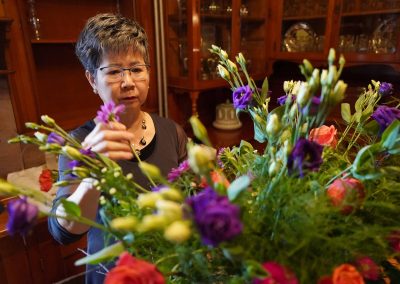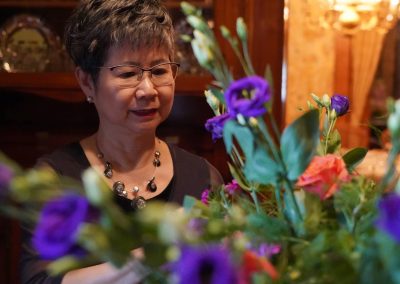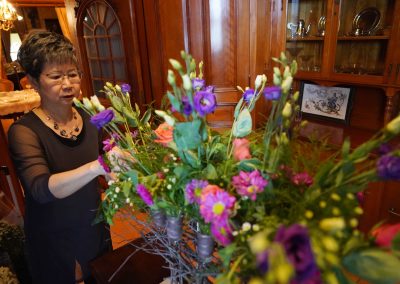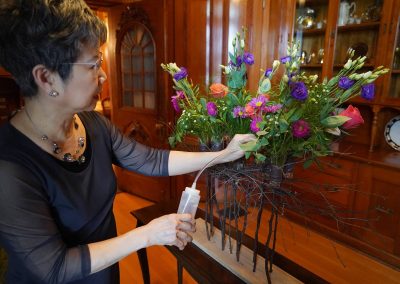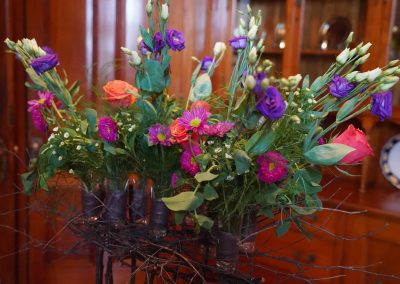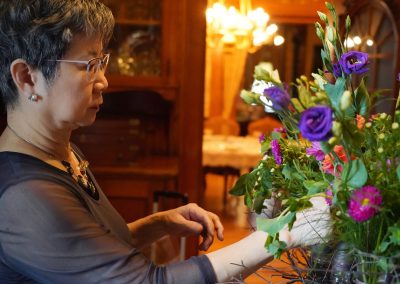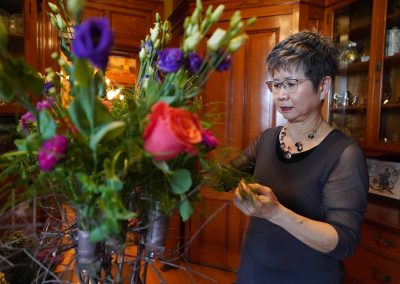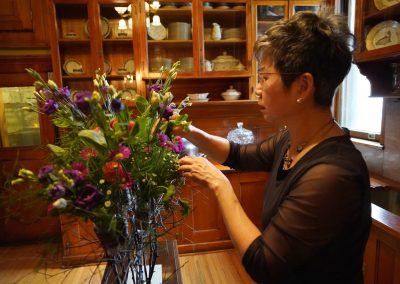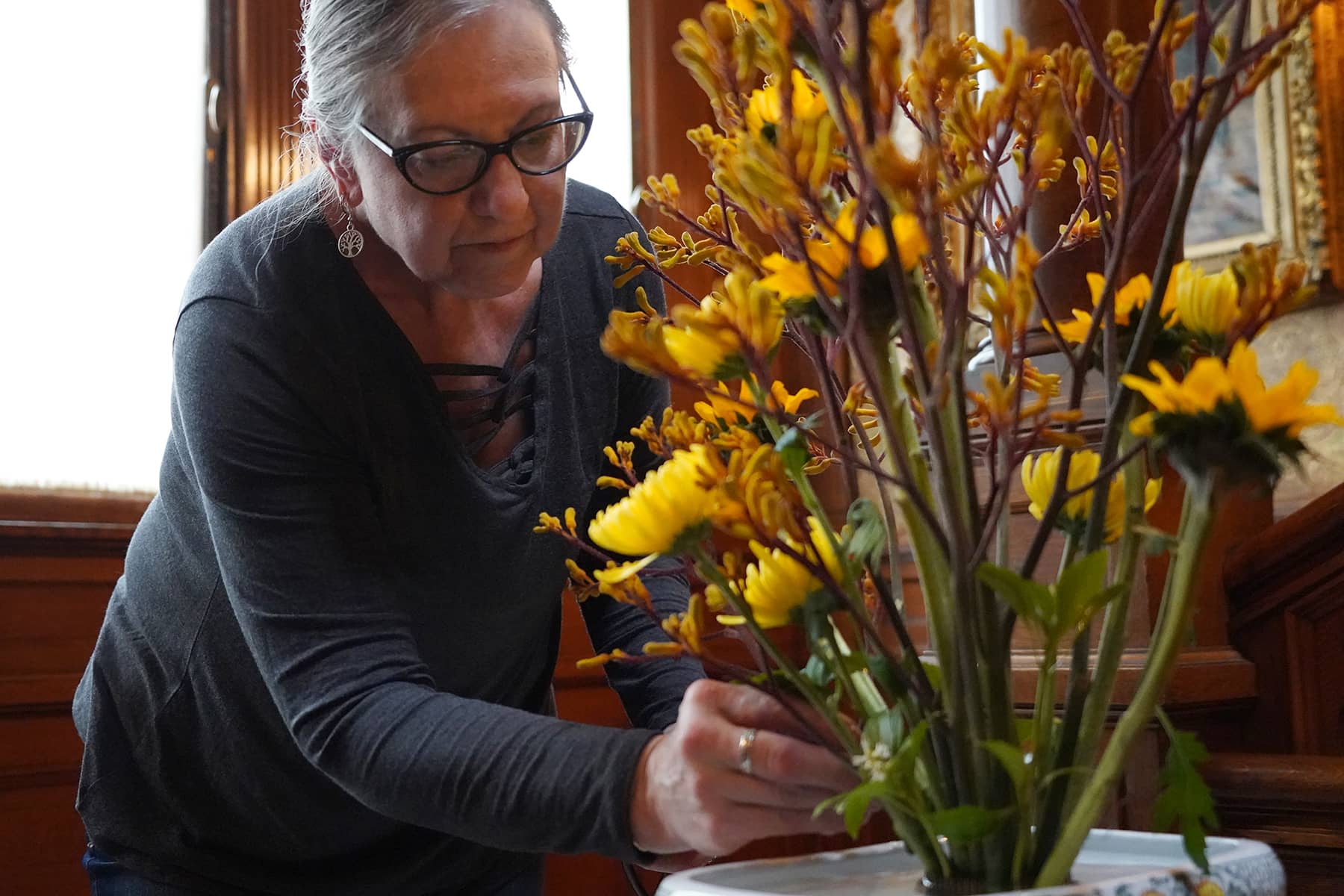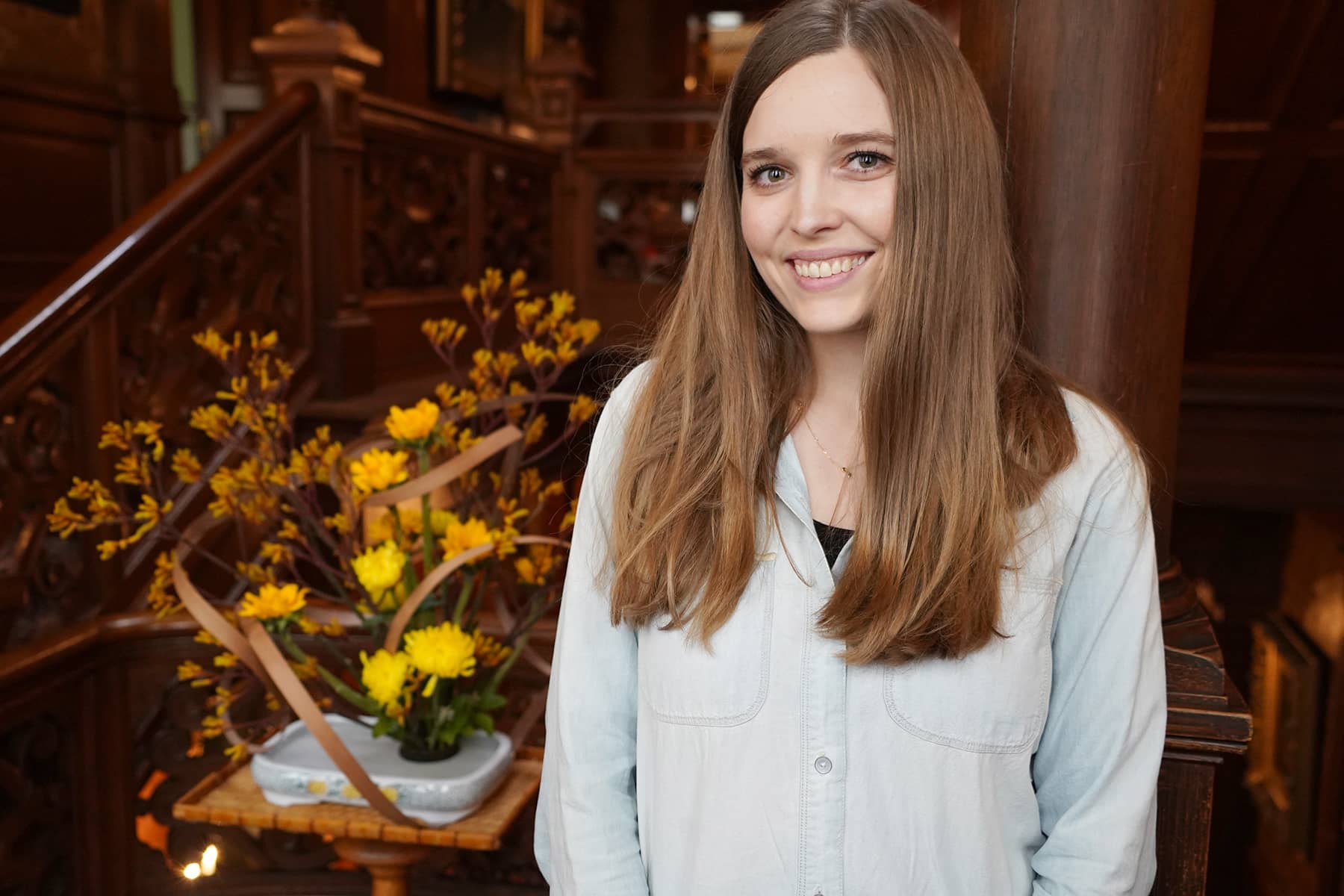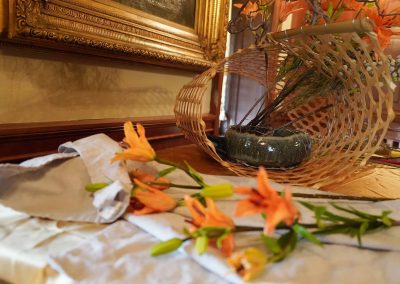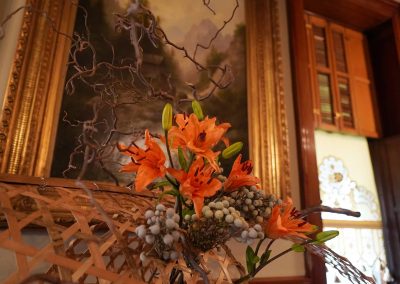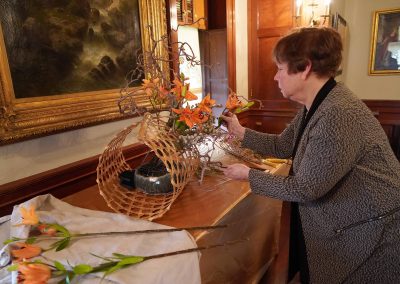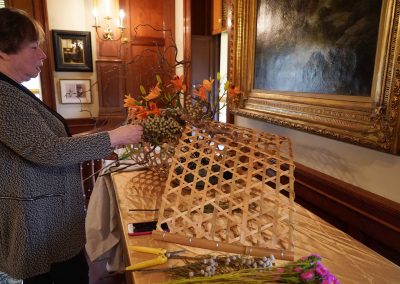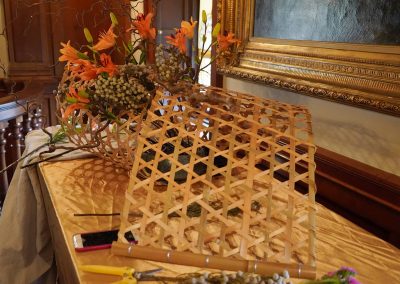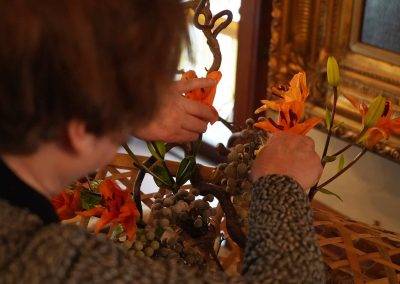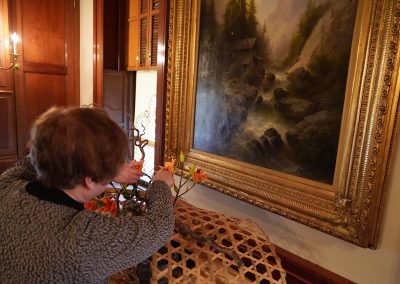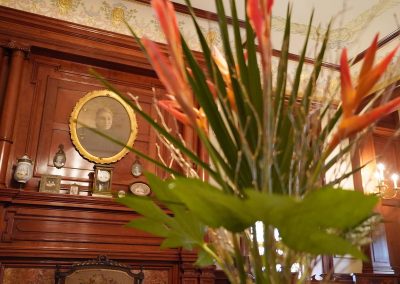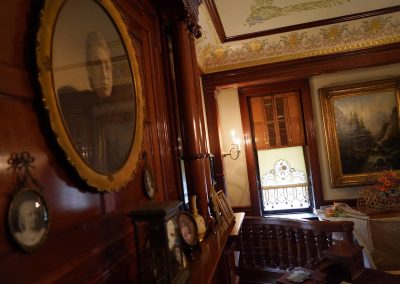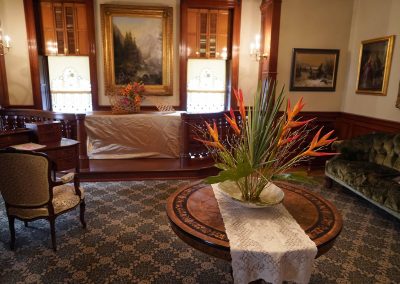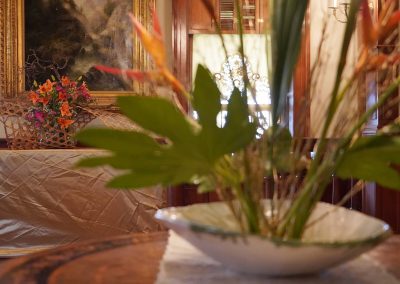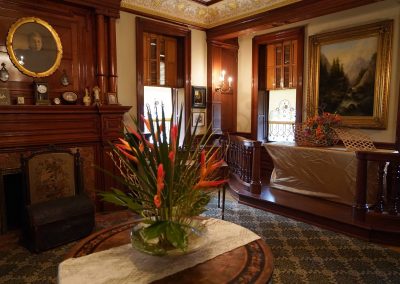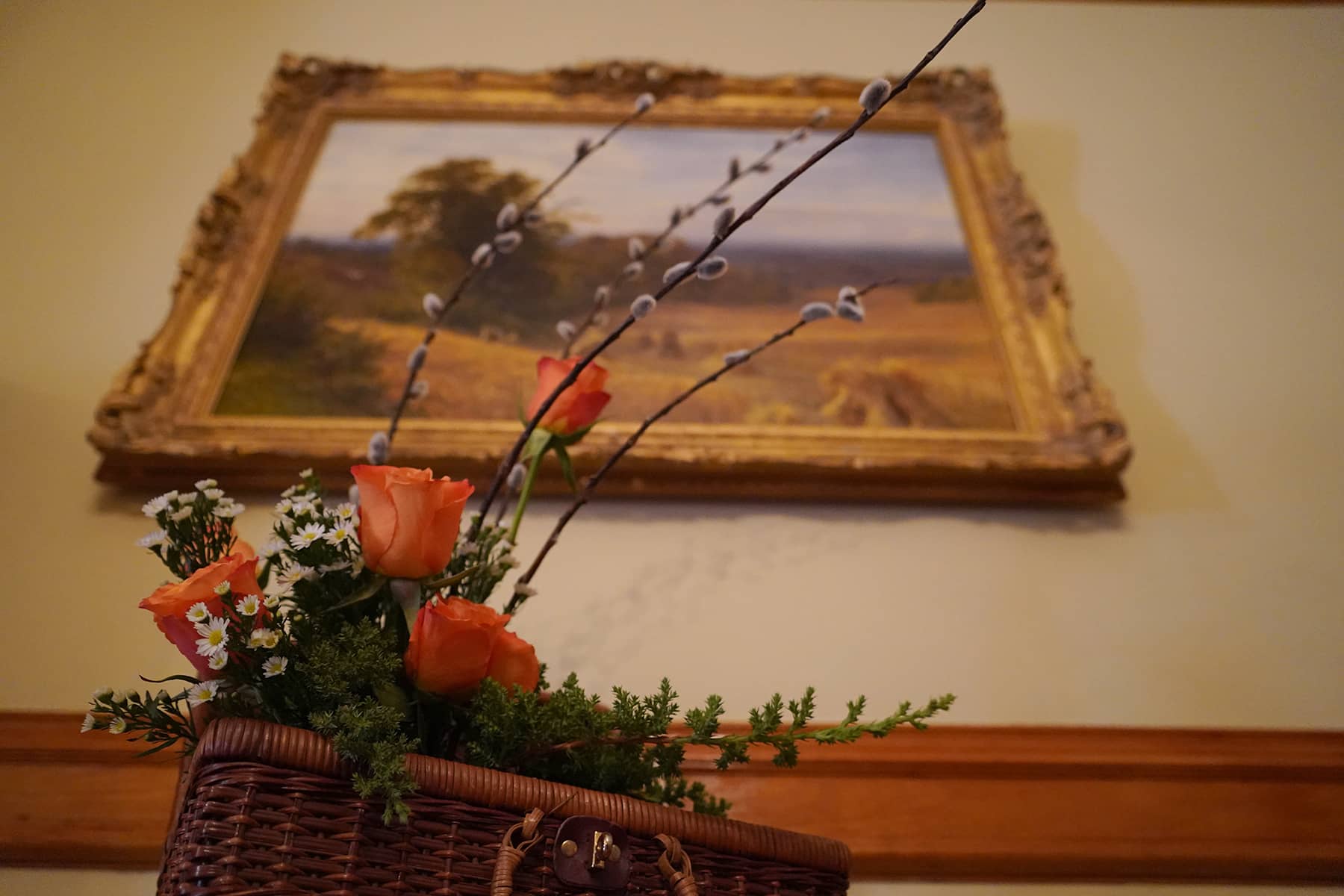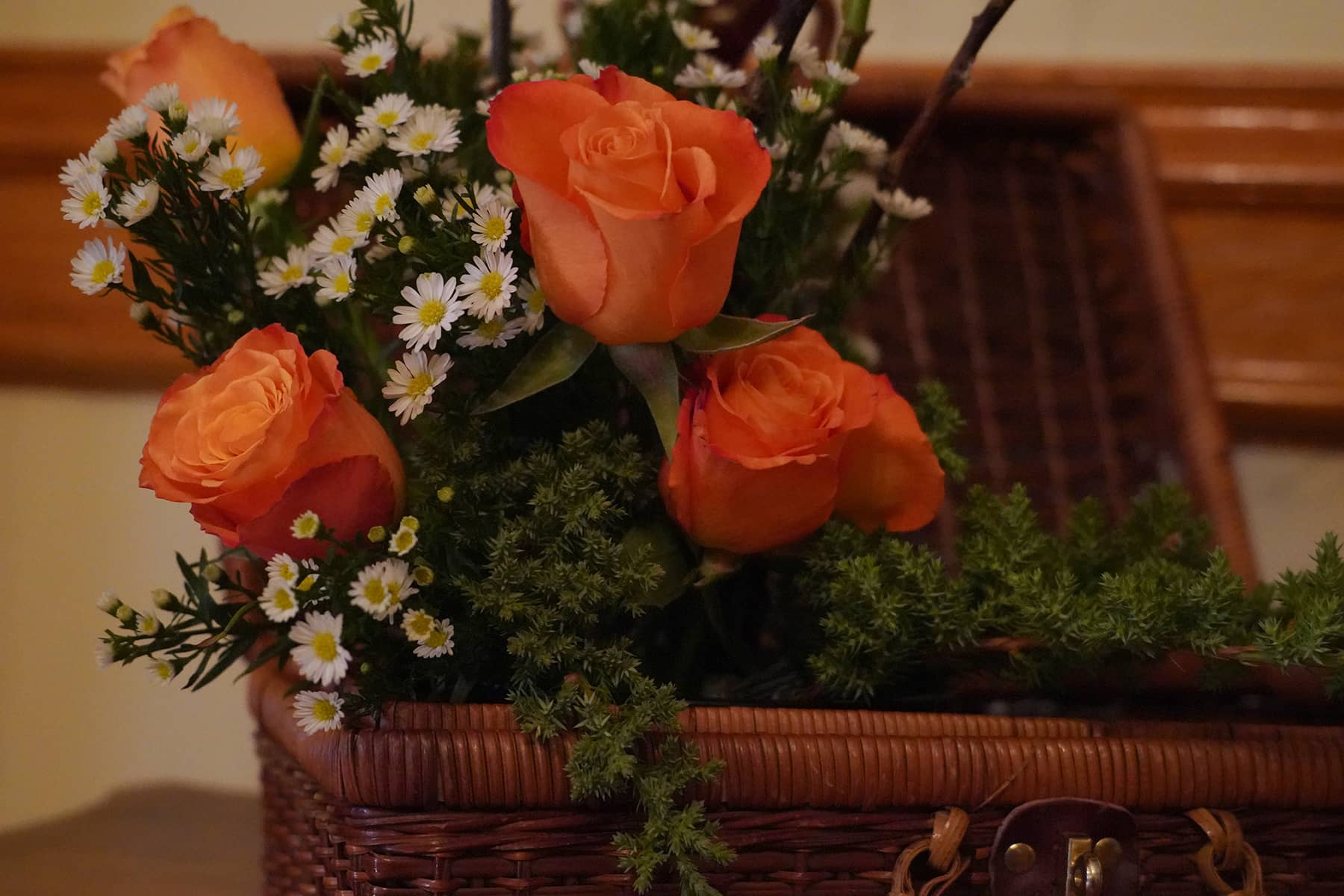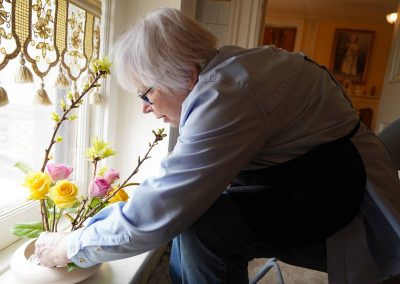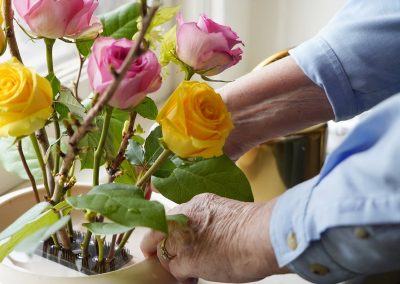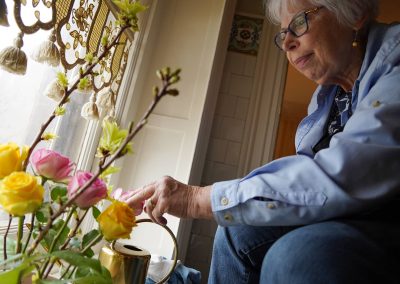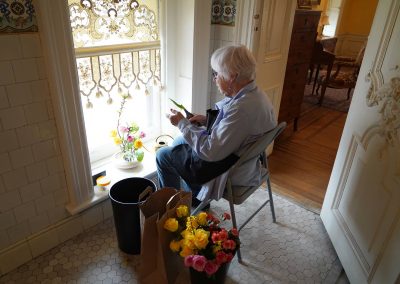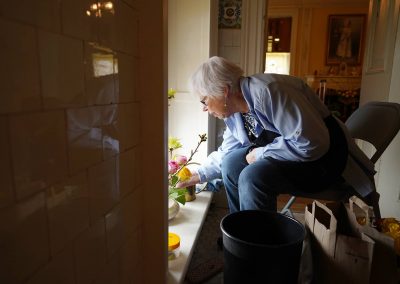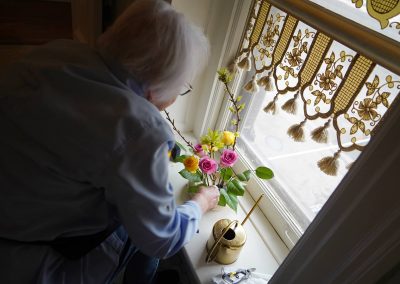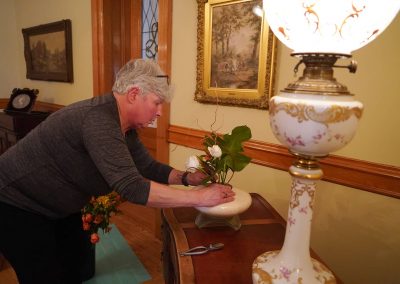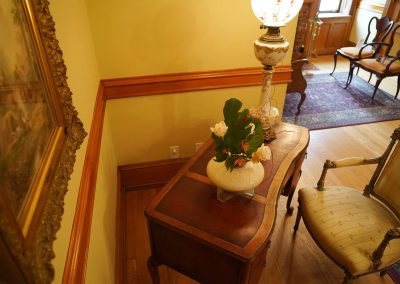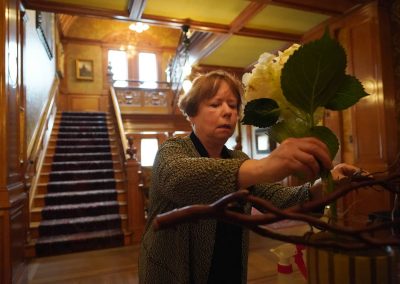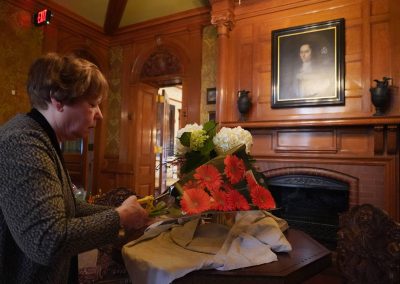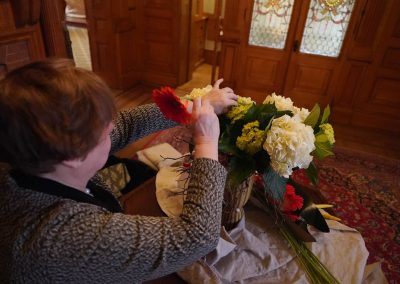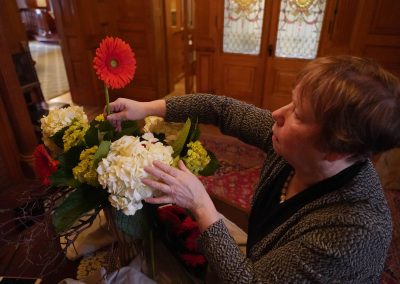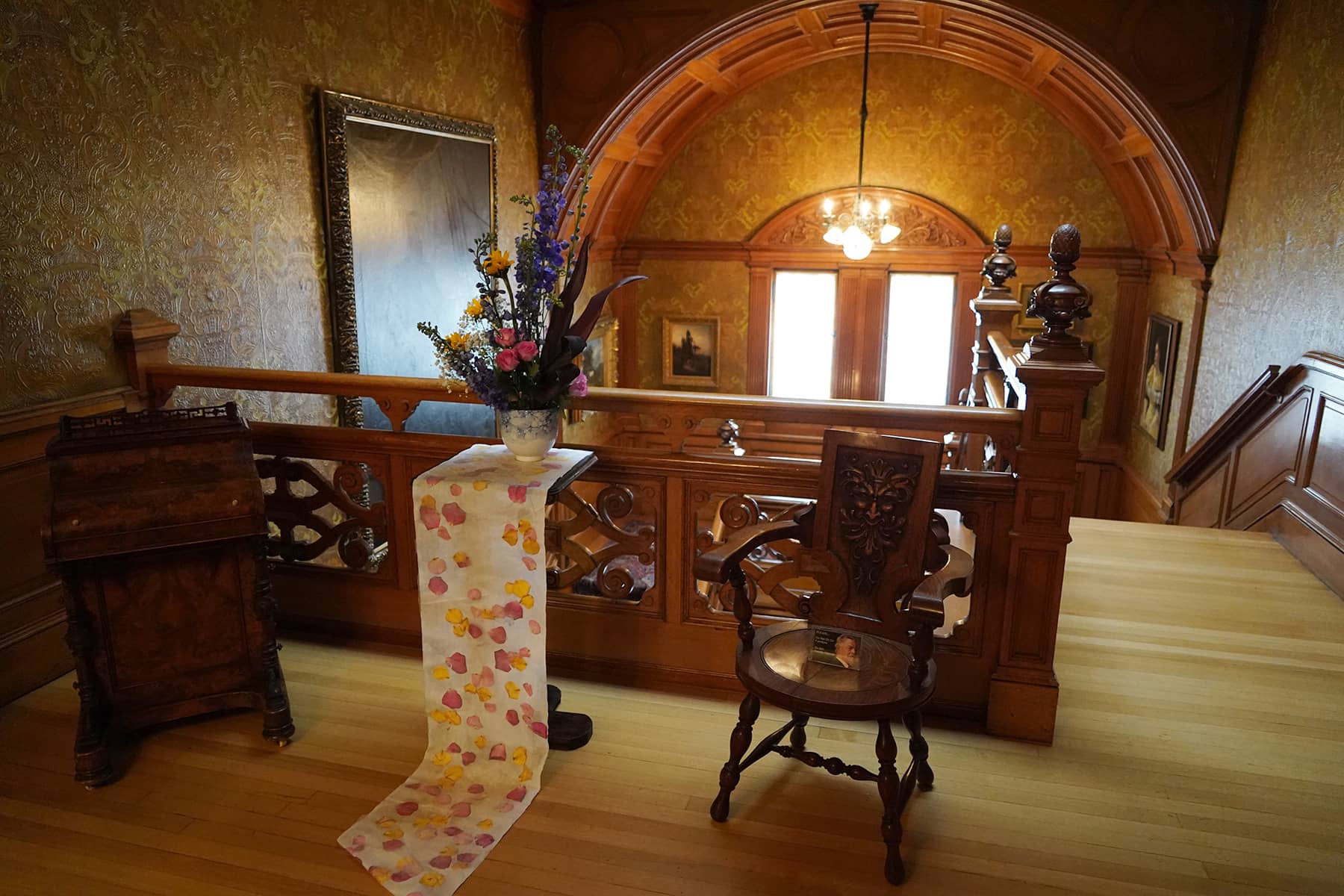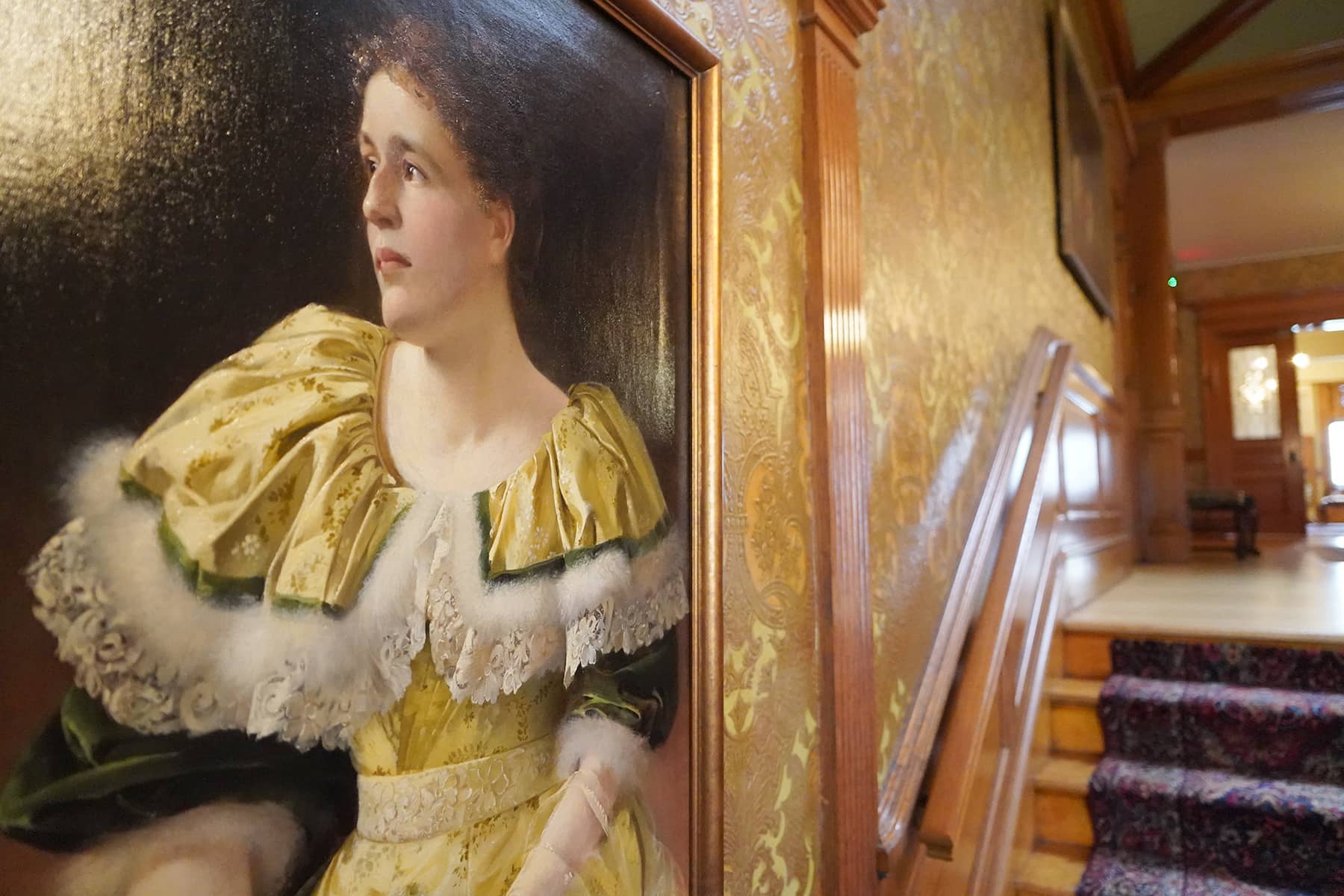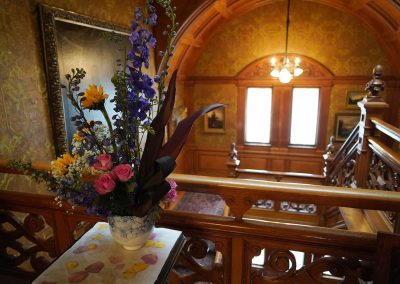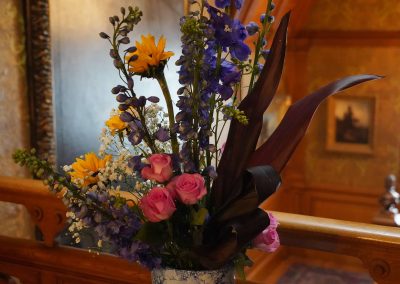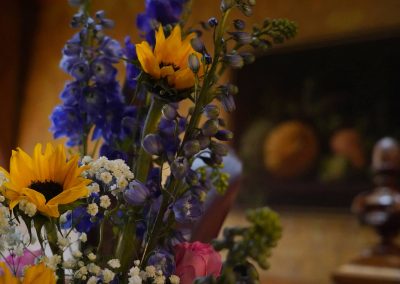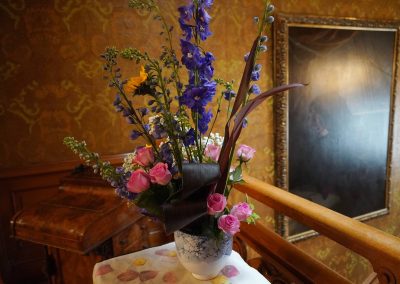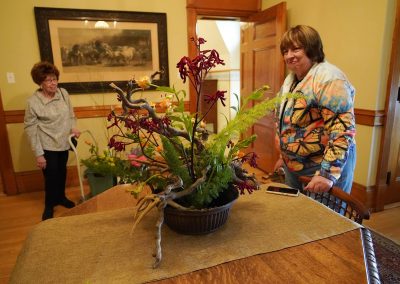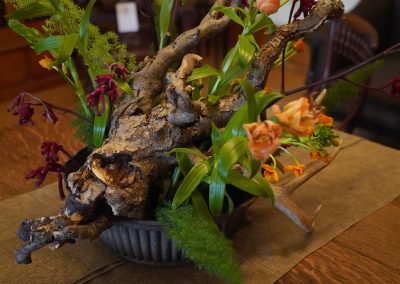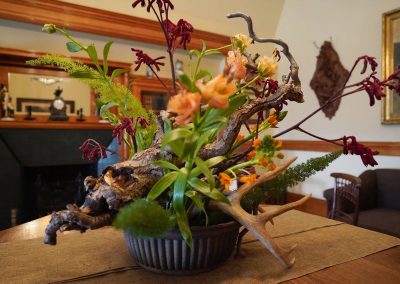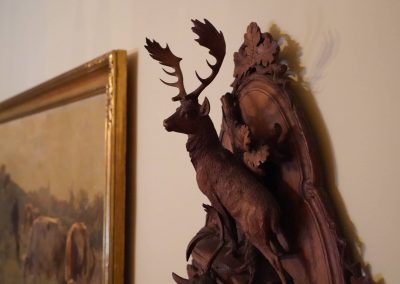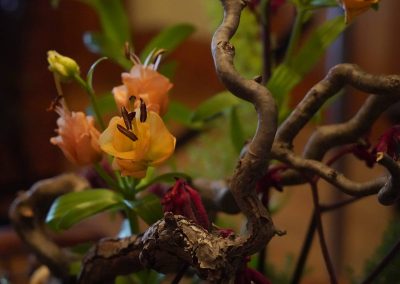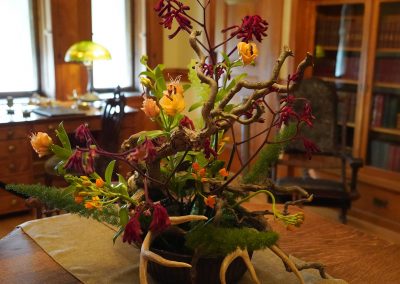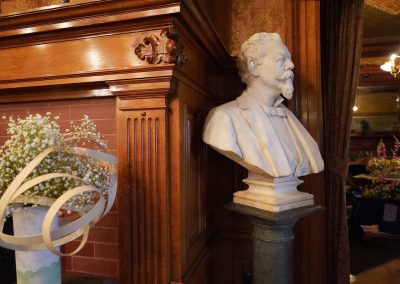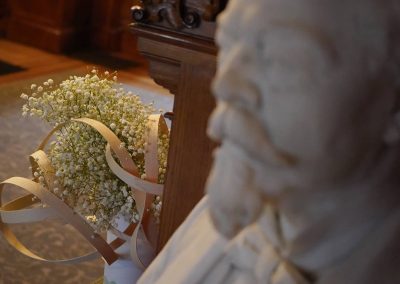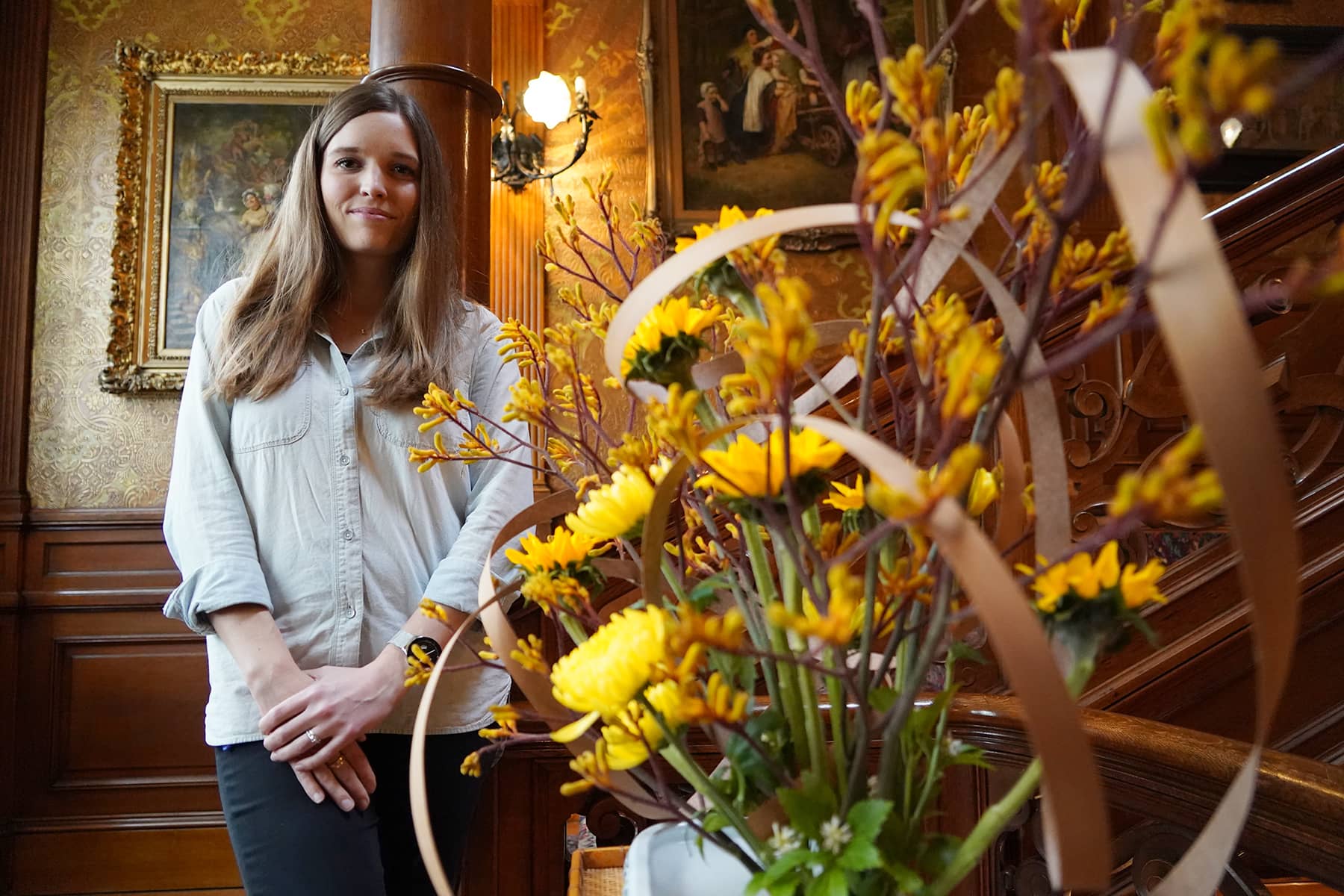
The Pabst Mansion partnered with the Milwaukee Chapter of Ikebana International to combine the beauty of the historic mansion and the ancient art of Japanese floral arrangements for an original cultural exhibition from April 29 to May 1.
Over twenty ikebana displays were positioned throughout the Pabst home for the event. They explored the symbolic qualities of the floral elements while also embracing the aesthetic and design of the historic mansion.
“In a lot of the rooms, and documented in the historical photos that we have, they are decorated with floral patterns and filled with fresh flowers. Ikebana just came to mind,” said Jocelyn Slocum, Curator of Collections and Communications Manager for the Pabst Mansion. “This is just such a beautiful house. I thought it would be amazing to do a show where the artists create displays that were inspired by the spaces. The rooms, wall coverings, paintings, woodwork, the whole ambiance was created by the Pabst family. Ikebana itself is such a symbolic art form, so I thought this venue lent itself really well to that expression.”
The exhibition interpreted the past, present, and the spiritual flow between those moments in time with the collection of meditative floral compositions. Visitors were invited to reflect not only on the home and the family that once inhabited it, but also their own connections to the wider space around them.
“The Tynecastel Tapestry wall treatment and complementing stained glass as inspiration for the texture and colors of materials.” – Lynn Laufenberg, Junior Master at Ichiyo School of Ikebana (Tokyo, Japan)
After the 2011 Tōhoku earthquake and tsunami devastation in Japan, Kawase Toshiro – one of the most influential practitioners of the art of plant arrangement – gained a global audience by posting images of his works online.
A Master of ikebana, the art of “making flowers alive,” Kawase was famously quoted as saying that the embodiment of ikebana was to see that “the whole universe is contained within a single flower.”
Japan’s Shinto culture believes that Kami – often thought to mean “gods” but more accurately referring to “holy powers” or spirits – are at the root of everything. Like Hinduism, Shinto believes Kami reside in every form of nature. So even flowers are seen as an extension of God.
“The use of deer sheds was inspired by the wonderful wood carving on the wall. Materials gathered from an imaginary walk in nature, known as ‘Found Ikebana,’ were used to invoke the sophisticated outdoorsman’s feel of the room.” – Lynda Curl, Ichiyo School of Ikebana (Tokyo, Japan)
Ikebana developed during the Muromachi period (1333–1568) and is believed to have its roots in Buddhist flower offerings, a custom that dates back to the sixth century when Chinese Buddhist monks introduced the tradition to Japan.
The distinct Japanese art form slowly developed over the centuries. Numerous schools with varying techniques and nuanced philosophies have evolved since, but each continues to stay true to the core edict that ikebana conveys the connection of humanity and nature, and the existence of those dualities.
“The vivid cherry woodwork, oil paintings in gilt frames, and the intricate ceiling decor influenced the colors and movement in these arrangements. By enhancing this room with the pair of displays, I want the room to look alive as it would when Mrs. Pabst used it as her personal space.” – Laurie Wareham, Master Sensei at Ichiyo School of Ikebana (Tokyo, Japan)
Ikebana seeks to emphasize harmony among different elements, such as seasonal plants and flowers, dried branches, stones, and even moss, arranged with meticulous care in a container of ceramic, glass, wood, bamboo, or metal.
Highly symbolic in its essence, ikebana requires careful attention to harmony. It not only considers the types of florals selected, but their colors and combined shapes to create a living sculpture.
“I used a large yellow glass bowl with curved edges to tie into the yellows in the room. Picking up on the brightness of the space, I incorporated forsythia branches and yellow roses. The addition of pink roses represents the flowers that little Elsbeth is holding in her portrait above the fireplace.” – Carolyn Jackson, Instructor at Ichiyo School of Ikebana (Tokyo, Japan)
The special exhibition at the Pabst Mansion draws on the concept of time and place. As a result, the Gilded Age of Milwaukee, American and European design elements, the art that adorns the walls, and the Pabst family themselves are reflected in the ikebana arrangements.
“This ‘floating freestyle’ arrangement is composed of two separate sections: the top portion representing staff in the pantry busy preparing for guests, while the bottom shows the pristine presentation seen when being served at the dining table.” – Cindy Hum, Junior Associate Master at Ichiyo School of Ikebana (Tokyo, Japan)
The inspirations can be seen in the Butler’s Pantry, Mrs. Pabst’s Parlor, Grand Staircase, 3rd Floor Foyer, Mrs. Pabst’s Sitting Room, the Music Room, the Captain’s Study, and throughout all three floors of the home, including bathrooms.
“During the pandemic, I was watching the show ‘Japanology’ on NHK, which is like Japan’s PBS. There was an episode about ikebana, and I just fell in love with it,” said Slocum. “I really appreciate what these creative floral artists can do. And I thought the Pabst Mansion was the perfect space to inspire new floral sculptures for this ancient form of art.”
Often when people refer to the Pabst Mansion, they think of it as a static house museum with a couple holiday themed exhibits. But “Floral Reflections: Ikebana at the Pabst Mansion” is part of many specialty tours held throughout the year, all designed as new ways to interpret the house and its founding family. Along with the post-pandemic return of the beer garden at the end of May, other popular tours will also resume.
Slocum said that a lot of the original Pabst artwork had been returned in resent years. They had previously been scattered to other private collections for almost 70 years, from when the Pabst family vacated the home until it was restored into a museum.
The Pabst Mansion was constructed between June 1890 and July 1892 for a cost of just over $250,000. Today, it remains as one of only a few prominent residences surviving from the days when Wisconsin Avenue was known as Grand Avenue.
Lee Matz

